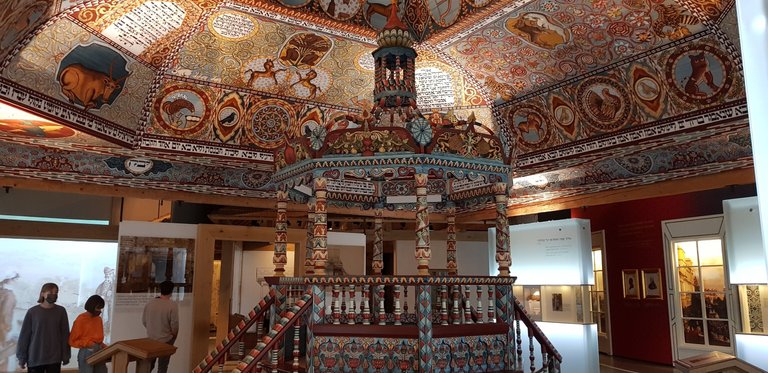
Today I went to an amazing place - a huge, modern museum of the History of Polish Jews POLIN. The museum building itself is impressive. Especially at night when it is illuminated. The museum is located in Warsaw, at 6 Anielewicza Street. Before the war, it was a district inhabited mainly by Jews, and later it was a ghetto. "The museum brings back the memory of their rich culture and heritage."
Wybrałam się dzisiaj do niesamowitego miejsca - ogromnego, nowoczesnego muzeum Historii Żydów Polskich POLIN. Już sam budynek muzeum robi duże wrażenie. Szczególnie nocą, gdy jest podświetlony. Muzeum znajduje się w Warszawie, na ul. Anielewicza 6. Przed wojną była to dzielnica zamieszkana przede wszystkim przez Żydów, a później było tu getto. "Muzeum przywraca pamięć o ich bogatej kulturze i dziedzictwie."
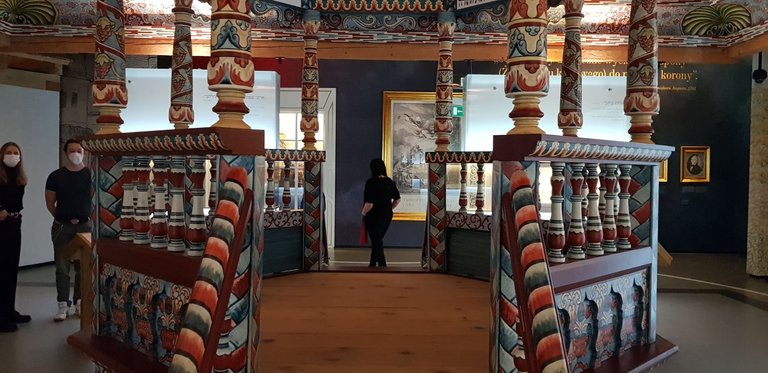
This is what the building of the museum looks like. It is not just a beautiful, modernist building. The very shape of the building contains references to the difficult history of Jews. The main hall, from the lower floors to the upper ones, is as if cut open to symbolize these difficult moments.
Tak wygląda budynek muzeum. Nie jest to po prostu piękna, modernistyczna budowla. Już sama bryła budynki zawiera odniesienia do trudnej historii Żydów. Główny hol, od dolnych pięter, po górne jest jakby rozcięty, co ma symbolizować te trudne chwile.
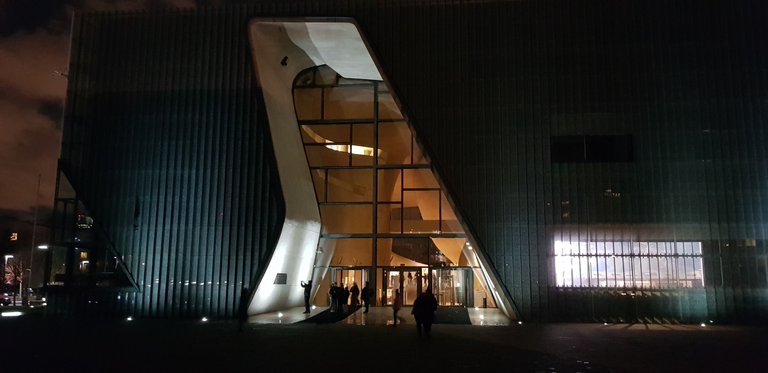
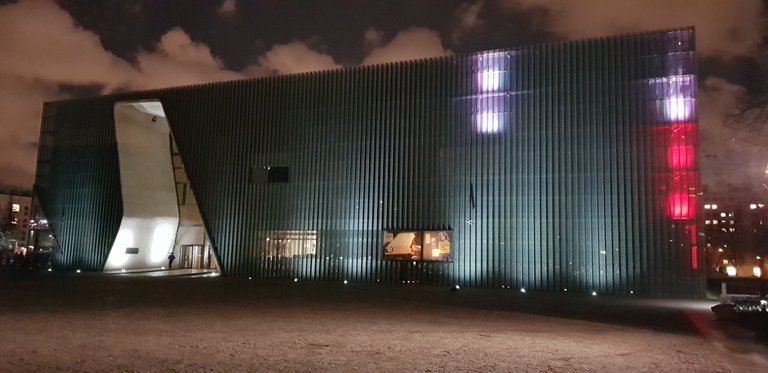
This is what my ticket to the museum looked like. The tickets show various exhibits from the museum. On my luck, one of the museum halls was photographed, which I liked the most and will be described to you in this post.
Tak wyglądał mój bilet do muzeum. Na biletach są uwiecznione różne eksponaty z muzeum. Na moim szczęśliwie została sfotografowana jedna z muzealnych sal, która najbardziej mi się spodobała i zostanie wam opisana w tym poście.

The bimah is a place on a platform in the synagogue. The Torah and prophetic books are read there. Prayers are held there. I was delighted with the colors, the richness of various motifs, and the attention to detail. It is an honor to be invited inside the bima to read a portion of the Torah publicly from there.
Bima to miejsce na podwyższeniu, w synagodze. Czyta się tam Torę i księgi prorocze. Odbywają się tam modlitwy. Zachwyciła mnie kolorystyka, bogactwo różnych motywów, dbałość o detale. To zaszczyt, być zaproszonym do środka bimy, żeby publicznie przeczytać stamtąd fragment Tory.
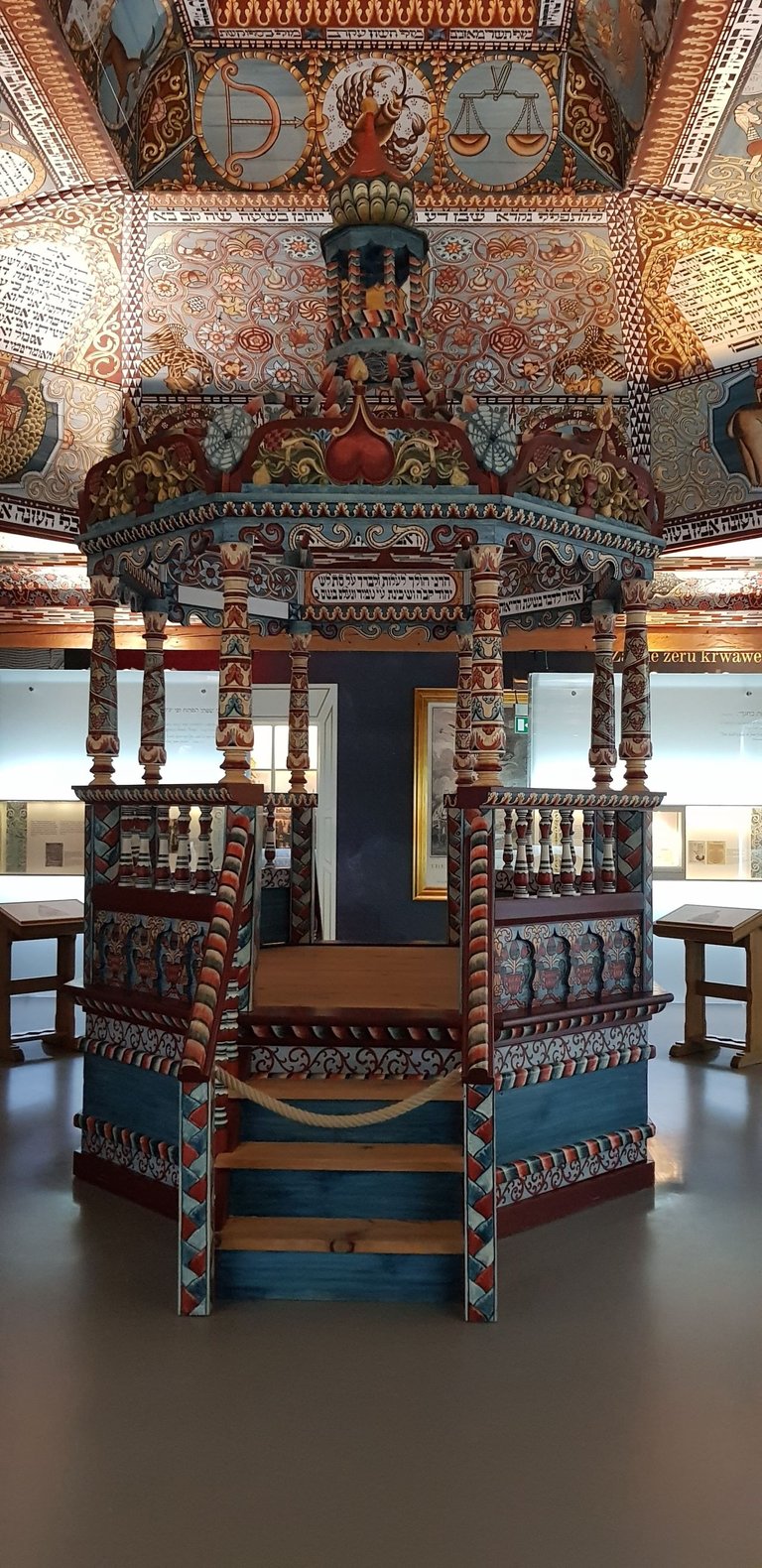
There were a lot of people in the museum today. Poles and foreigners, I even heard the Korean language. It was great to watch the various exhibits, as if together with other people, to see their reactions, curiosity. During the pandemic, many museums gave the possibility of virtual tours. On the one hand, it is a convenient, but completely incomparable experience with such a live sightseeing tour. In addition to the presence of other visitors, there are also employees of the museum. When I was in the room where there was a colorful bimah, I asked an employee about it, and the employee told me interestingly about the bimah - how it was created and painted with special paints. You could feel the passion and delight in this man's words.
W muzeum było dzisiaj sporo ludzi. Polacy i obcokrajowcy, słyszałam nawet język koreański. Fajnie było oglądać różne eksponaty, tak jakby razem z innymi ludźmi, widzieć ich reakcje, zaciekawienie. W czasie pandemii wiele muzeów dało możliwość wirtualnego zwiedzania. Z jednej strony to wygodne, ale zupełnie nieporównywalne doświadczenie z takim zwiedzaniem na żywo. Oprócz obecności innych zwiedzających są też pracownicy muzeum. Gdy byłam w sali, w której znajdowała się kolorowa bima zapytałam o nią pracownika, a ten ciekawie mi o bimie opowiedział - jak była tworzona i malowana specjalnymi farbami. Czuć było pasję i zachwyt w słowach tego człowieka.

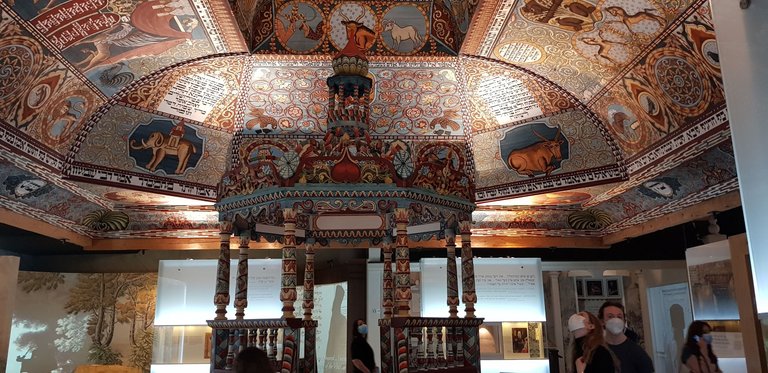
There were various valuable items in the glass cases and you could learn interesting information about Jewish culture, incl. how time is measured - months from the phases of the moon and the seasons from the phases of the sun. There are also elements of farming (time of sowing and harvesting), history and religion.
W szklanych gablotach znajdowały się różne cenne przedmioty i można było dowiedzieć się ciekawych informacji na temat żydowskiej kultury, m.in. tego jak mierzony jest czas - miesiące na podstawie faz księżyca, a pory roku na podstawie faz słońca. Do tego dochodzą elementy uprawy roli (czas zasiewu i zbierania plonów), historii i religii.
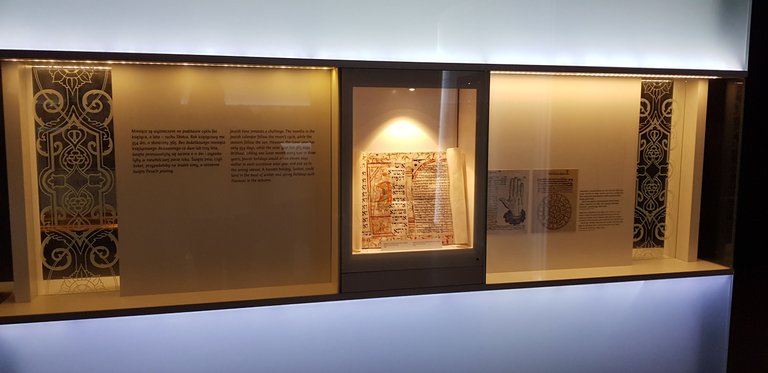


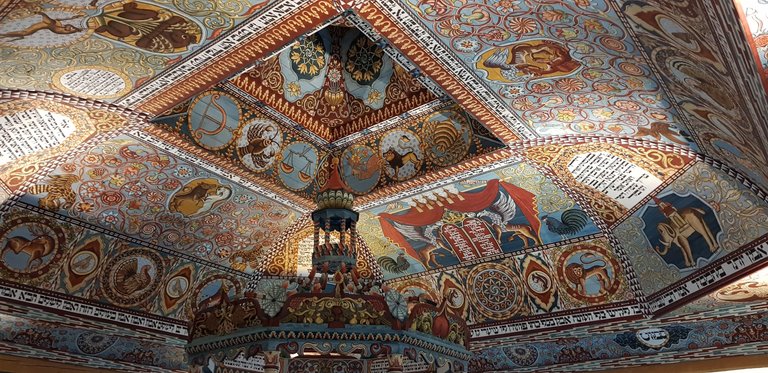
what a beautiful structure
😊
Thanks @ackhoo 😊
Daily Travel Digest #1478.
Become part of our travel community:
- Join our Discord
- Learn more about our travel application
Hiya, @LivingUKTaiwan here, just swinging by to let you know that this post made it into our Honorable Mentions in Your post has been manually curated by the @pinmapple team. If you like what we're doing, please drop by to check out all the rest of today's great posts and consider supporting other authors like yourself and us so we can keep the project going!Thanks for visiting my blog and supporting my post @LivingUKTaiwan 😊🌻
Congratulations, your post has been added to Pinmapple! 🎉🥳🍍
Did you know you have your own profile map?
And every post has their own map too!
Want to have your post on the map too?